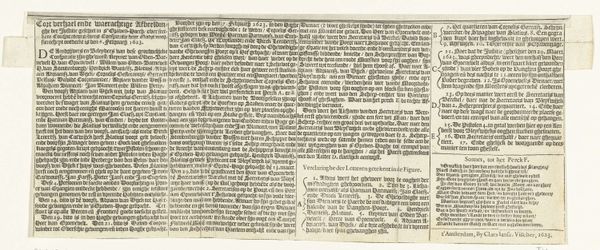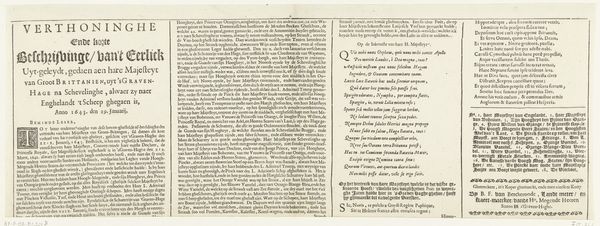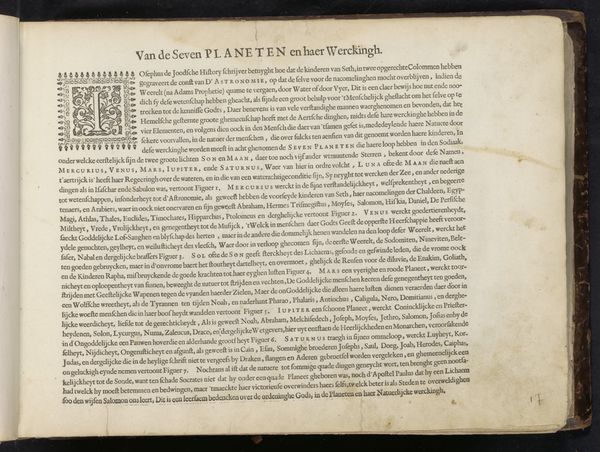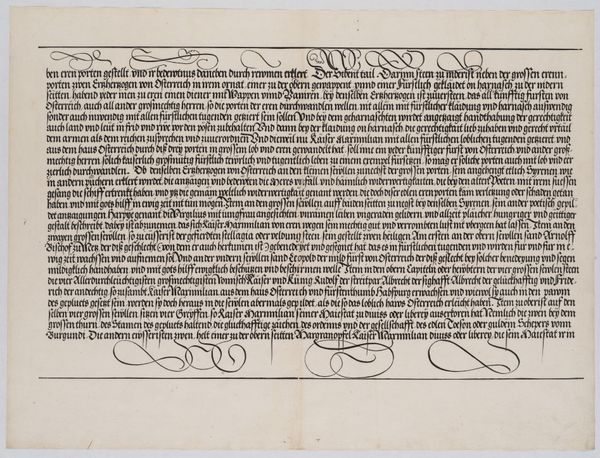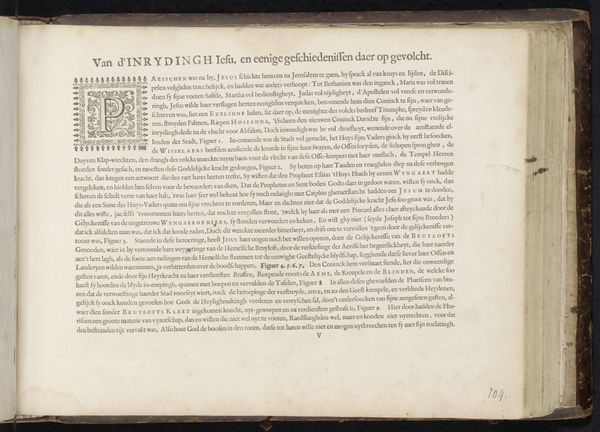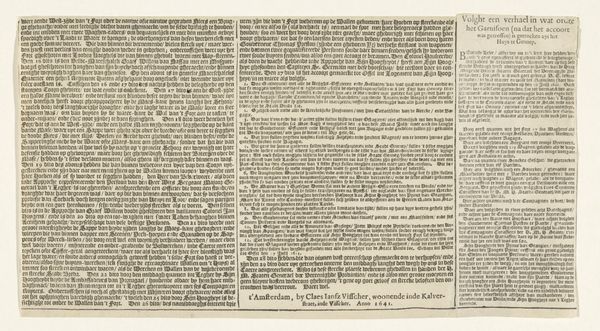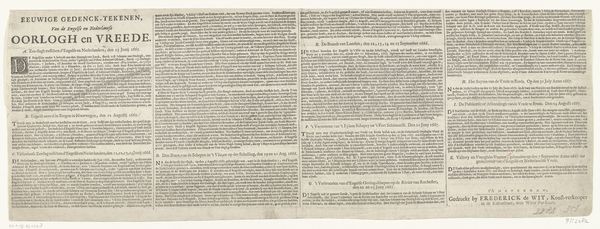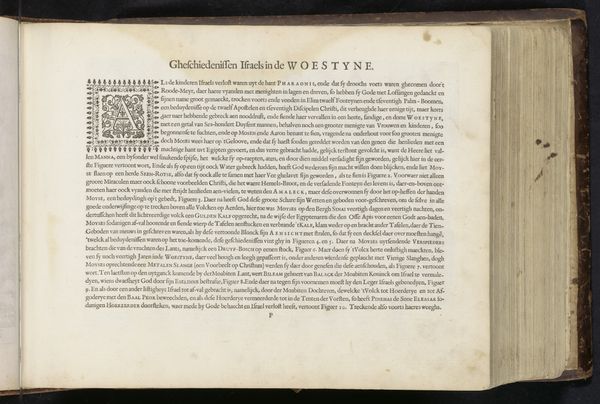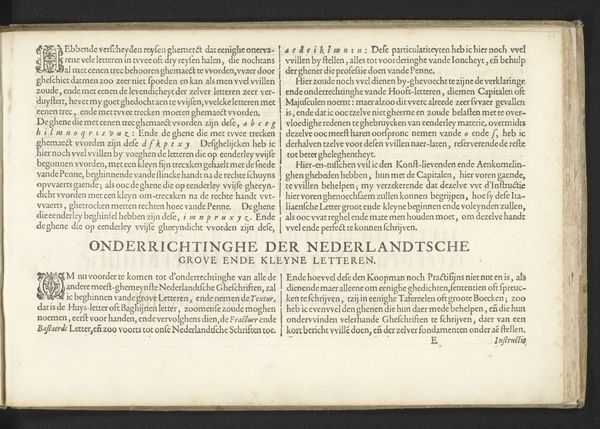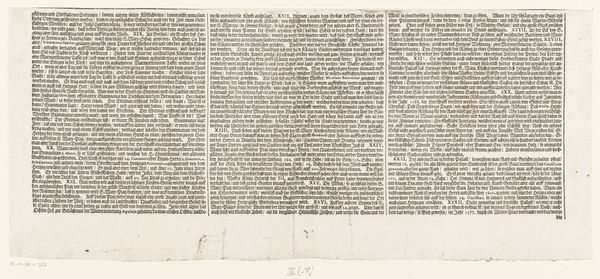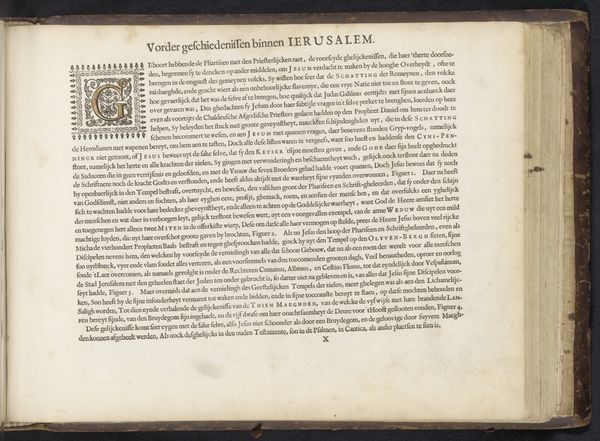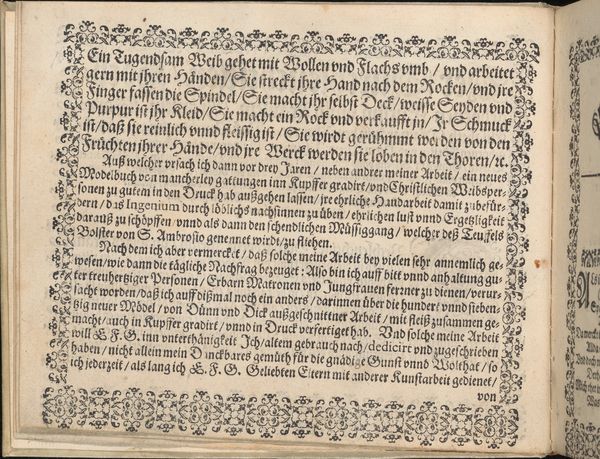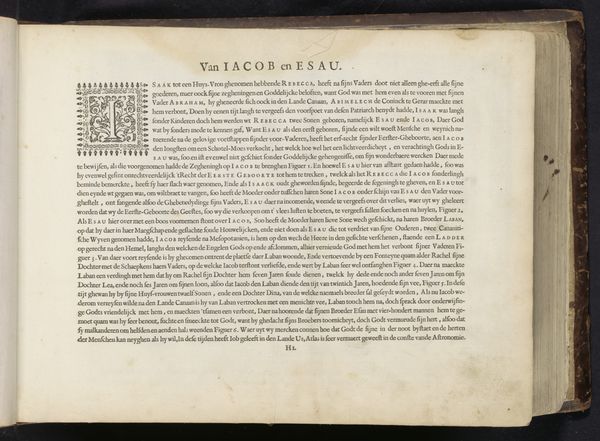
Duitse afscheidsbrief van keizer Karel V aan alle vorsten van Duitsland, 1556 1556 - 1558
0:00
0:00
Dimensions: height 346 mm, width 497 mm
Copyright: Rijks Museum: Open Domain
Curator: I’m struck by the starkness of this piece—the intense concentration of text filling every available space. There's a density to it that almost feels…suffocating, like a silent scream trapped on paper. Editor: This is the "German Farewell Letter of Emperor Charles V to All Princes of Germany, 1556," a woodcut printed on paper now residing here at the Rijksmuseum. Beyond the initial intensity, this document reveals so much about the historical context, the fraught political landscape of the Holy Roman Empire during the mid-16th century. It signifies the twilight of Charles V's reign, his abdication, and his attempt to unify a fractured realm. Curator: It's interesting you say that, because I almost read it the other way. To me, the density speaks to the overwhelming feeling someone must experience when stepping away from absolute power after holding that control for a long period. It looks and feels overwhelming and complex. What do you think the choice of medium means here? It's so simple; woodcut on paper...but then there is the original signature. Editor: The choice of the woodcut as a printing medium is telling, in my opinion. During the Renaissance, this printing method was very widespread in conveying official information and important declarations. Furthermore, we should think about who it speaks to; the German Princes. Therefore, it becomes a formal articulation to solidify imperial power. However, in stepping back from this role, what's the impact? Do you find that it reads more of vulnerability in its message? Curator: Hmm, I don't know. Vulnerability is a complex concept when talking about Empires and the idea of being divinely sanctioned to have rule. Looking at the symbolism and language together, it can't be a true farewell letter without including some form of passing on your wishes and desires for a strong reign within that space and realm, can it? Editor: Exactly. What resonates is the performative nature of the language and the materiality, emphasizing its intersectional message and influence. The themes presented speak beyond mere political machinations and reveal power. We are now speaking about concepts related to race, religion, gender, and other core ideological considerations that need to be brought forth for proper inspection. Curator: It's definitely a piece that invites many layers of thinking. As we conclude here, I think both of us leave having inspected this artwork, having recognized it as more than meets the eye! Editor: Yes, indeed, it’s a reminder that even seemingly straightforward historical documents can resonate powerfully with contemporary conversations.
Comments
No comments
Be the first to comment and join the conversation on the ultimate creative platform.
